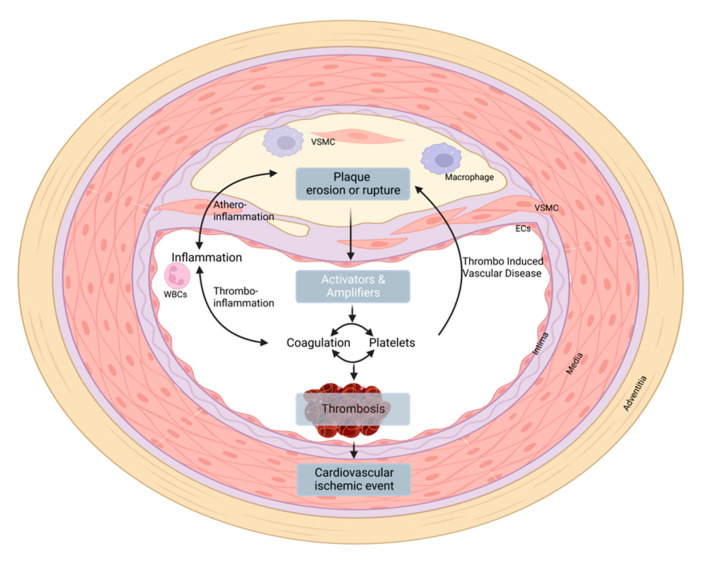Figure 1.
Schematic representation of interactions between atherosclerosis, inflammation, and thrombosis in peripheral arterial disease. Inflammation initiates or stimulates the development and progression of atherosclerosis, while the atherogenic process triggers inflammation (the athero-inflammation axis), which acts as key modulator of thrombosis (the thrombo-inflammation axis). Plaque and vascular components trigger the activation of platelets and the coagulation system, leading to thrombus formation. Activated platelets and ongoing coagulation further enhance inflammation, thereby indirectly influencing atherosclerosis. The direct effects of active coagulation factors and activated platelets on atherosclerosis are depicted in the “thrombo-induced vascular disease axis”, in which coagulation proteases directly affect atherogenic cells such as macrophages, smooth muscle cells, and endothelial cells. Created with Biorender.com accessed on 10 October 2022.

